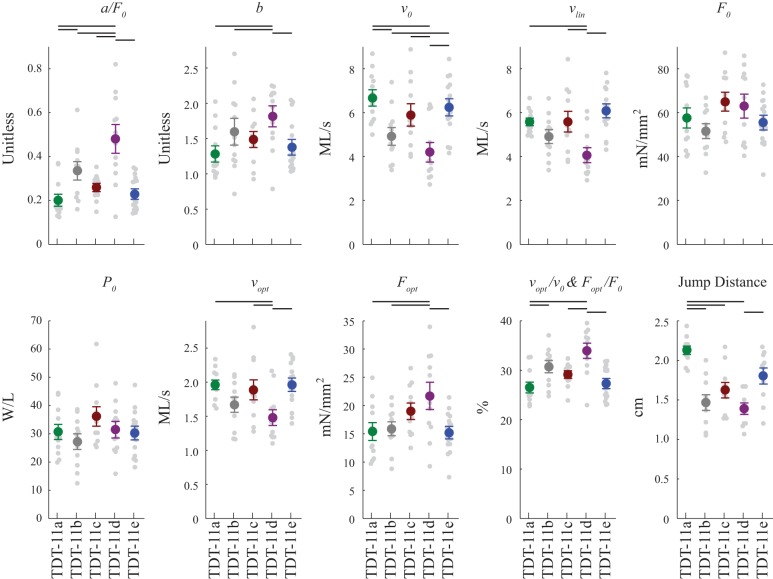Fig. 5.
Drosophila jump muscle mechanical properties and jump distances. Force-velocity relationship (FVR) parameters were measured using the force-clamp technique and fit using Hill’s equation. a/F0 is inversely proportional to FVR curvature. The higher the value the more linear the FVR; b is a fit parameter; v0 is maximum shortening velocity, vlin is maximum shortening velocity determined by extrapolation to zero force using the four fastest velocities, F0 is isometric tension measured immediately before each force-clamp, P0 is maximum power generated, vopt is the velocity at which maximum power was produced, Fopt is the tension at which maximum power was produced, vopt/v0 and Fopt/F0 are optimal velocity and optimal tension normalized to maximum velocity and isometric tension, respectively. Note that vopt/v0 and Fopt/F0 are algebraically equivalent and have been previously referred to as M (15, 47). Jump distance was measured using flies with their wings removed. Colored circles are means ± SE, with each data point shown by a gray dot. The number of fibers used was 13, 12, 12, 12, and 18 for tergal depressor of trochanter muscle (TDT)-11a, TDT-11b, TDT-11c, TDT-11d, and TDT-11e, respectively. Fibers were from 2- to 3-day-old female flies. Black horizontal bars indicate significant difference between lines by one-way ANOVA followed by Holm-Sidak pairwise comparisons with P < 0.05.

